The Great Texas Mopar® Auction: Part VII
We’re halfway through the month of July and there are just 12 weeks until the Great Texas Mopar® Hoard Auction Event happens on October 13th and 14th. Let’s keep the ball rolling with another preview of vehicles that’ll be sold at no reserve in this online auction that’s hosted by Spanky Assiter and his team at Spanky’s Freedom Car Auctions.
Remembering that this amazing stash of over 250 cars, vans and light trucks are stored in rural Texas, transportation will have to be arranged after the sale to get each and every vehicle purchased to its new owner. But fear not. Spanky Assiter is a veteran of the automotive auction scene and has arranged for professional vehicle haulers to be on standby to move the cars immediately after the sale dates.
For bidding information and registration details, stay tuned to Spanky’s Freedom Car Auctions website for more information as the auction dates get closer. Until then, let’s resume our tour of The Great Texas Mopar Hoard!
1960 Plymouth Savoy Two-Door Taxi: Lot #138
Look closely at Lot Number 138, a 1960 Plymouth Savoy two-door sedan. The missing front bumper gave way to a set of towing tabs and hood pins once secured the hood. Could it have been somebody’s racecar? The exotic Exner-inspired tail fins clash visually with the boxy sedan body style. This one is the polar opposite of a sleek fastback Fury.
What’s even more shocking is how the VIN begins with “390” which tells us it’s a V8-powered full-size Plymouth (3) built to taxi Series Code (9) for the 1960 model year (0). Wait, what, a two-door taxi? A peek at Plymouth’s 1960 VIN language is in order to fully understand the special nature of this car. In 1960, full-size Plymouths (excluding the all-new compact Valiant) could be had as the Savoy (Series Code 1), Belvedere (Series Code 2), Fury (Series Code 3), station wagon (Series Codes 5, 6 or 7), Taxi (Series Code 9) or Fleet (Series Code 0).
But what about police cars? They carried Series Code 9 or 0. For 1961, the 9 Series Code was redefined as “Special / Police”. So we likely have a 1960 Savoy Police Pursuit that was re-purposed as a dragster after its law enforcement career ended. A peek under the hood reveals more shock and surprise. There are dual exhaust head pipes, manual steering and brakes, no A/C and – best of all – there’s an A-239 three-speed manual transmission hanging by wires under the transmission tunnel! It’s the same type of three speed gearbox that cost the Ramchargers victory at the 1961 NHRA Nationals at Indianapolis Raceway Park, its pin-type synchronizers hanging up as Ramchargers team driver Al Eckstrand attempted to power shift during a race against Dyno Don Nicholson’s fierce 409 Chevrolet. But that’s cool today.
In the trunk, the cast iron exhaust manifolds, single four-barrel intake manifold and steel bell housing tell us a 361 or 383 big block once powered this brute. The only thing cooler would be a set of Son-O-Ramic ram induction intake manifolds. One police goodie still present in the trunk is a massive Leece-Neville alternator. We didn’t have time to look, but chances are its got the police-only 12-inch drum brakes (one inch larger than standard) and beefy 1.01-inch torsion bars. How many of these do you think still exist?
1962 Chrysler 300: Lot #137
The 1962 model year brought a big change to the history of the Chrysler 300. While prior 300s – going back to the first C300 of 1955 – were all high-performance vehicles with multiple carburetion, solid lifters, massive brakes, stiffer springs, sway bars, shock absorbers and 150 mph speedometers, 1962 brought the watered down 300 Sport.
Less demanding from its driver, the 300 Sport relaxed the high strung nature of the “letter series” 300s and even introduced a four-door body option. They sold like hot cakes, with 25,578 built. Meanwhile, the letter-series continued for 1962, the 300-H targeted at motorists demanding the full 300 experience. Lot Number 137 is one of just 558 300-Hs sold in 1962 and from its condition, somebody had a “full experience” all right!
The right rear corner of the car has been bashed, probably during a rear-end collision. Though the 380-horsepower 413 and aluminum case 727 TorqueFlite® automatic transmission are missing, the rest of the “letter series” bits are still present, including the 1.01-inch-diameter torsion bars, six-leaf rear springs, 12-inch power drum brakes and leather bucket seat interior with center console, power windows, clear plastic “Astra-Dome” instrument panel and 150 mph speedometer.
Though the rear impact has crumpled the quarter panel and likely bent the frame, the solid nature of this relic encourages restoration to its former glory. Then again, this shocking example of squandered rarity might be perfect just as it sits. Why not add it to your collection of restored “letter cars” as a reminder of the sad fate that befell too many of them.
1965 Dodge Dart: Lot #133
The Dart GT arrived during the 1963 model year as the top-tier Dart model, above the Dart 170 and Dart 270. Designed to appeal to the young (and young at heart), standard GT equipment included front bucket seats and special ornamentation. But don’t make the mistake of assuming the GT package was a muscle car. Though the potent 273 four-barrel was an option, the 225 Slant Six was standard equipment.
Lot Number 133 is a classic example of a Slant Six engine-powered 1965 Dart GT – but with a special twist – a four-speed manual transmission. At least that’s how it was originally built. The four-speed – and Slant Six engine – are gone today, but remnants of the slick four-speed remain in the form of the clutch pedal and special transmission tunnel with its welded-on shift clearance hump and die-cast shift gate face plate.
In solid shape with a clean engine bay with modest rust at the rear quarter panels, this one would make the ideal basis for an altered wheelbase Match Bash replica with a Mopar Performance 426 HEMI® engine, four-speed transmission, narrowed (5.5 inches) Dodge A100 van front axle and leaf springs with Mopar Performance Super Stock leaf springs out back. Records show that of the approximately 40,700 Dart GTs built in 1965, most (about 22,700) were Slant Six powered like this was. But it doesn’t have to stay that way!
1957 Chrysler New Yorker: Lot #129
A shovel never had a cooler job. Propping the hood of this original paint 1957 Chrysler New Yorker (Lot Number 129), first-year quad headlamps and some of the Fifties finest tail fins are just a couple of the external treats on display. While lesser Chrysler Windsors and Saratogas made do with a smaller 354-cubic-inch V8 equipped with polyspherical cylinder heads (in their third year), the top-tier New Yorker got the now legendary 392-cubic-inch Firepower HEMI V8 engine with a single four-barrel carburetor and dual exhaust as standard equipment.
Being the biggest and baddest HEMI engine yet, hot rodders and drag racers eagerly sought wrecked New Yorkers from which to harvest their dome-headed hearts in the pursuit of ultimate acceleration. Though 34,620 of these massive 392s were installed in a like number of New Yorkers in 1957, finding an unmolested example is rare. And of those 34,620 New Yorkers, 10,948 wore the four-door hardtop body style seen here. With all four windows rolled down on a sunny day, it’s the next best thing to a convertible.
Sharing space with the Air-Temp air conditioning, the unique side-saddle air cleaner atop the massive HEMI engine was required because of Chrysler Chief Stylist Virgil Exner’s ultra-low cowl height. Nearly two inches lower than its 1956 counterpart, the low cowl allowed an equally low hood profile, all contributing to Exner’s “Forward Look”. But these details didn’t allow space for a traditional “top hat” style engine air cleaner.
There are a number of potential fates for this amazing survivor. Restoration or – shun the notion – disassembly of parts for the revival of a more desirable convertible or two-door model. And let’s not forget the ultra-desirable 392 HEMI engine. Decisions, decisions…
1959 Plymouth Suburban Station Wagon: Lot #127
This 1959 Plymouth Custom Suburban two-door station wagon (Lot Number 127) is one of just 1,852 built – versus 52,017 Custom Suburban four-door station wagons this same year. Though the six-passenger, four-door Custom Suburban wagons came standard with the 230-cubic-inch flathead six (in its final year before it was replaced by the 225-cube Slant Six in 1960), the two-door Custom Suburban wagons all came with standard V8 power in the form of Plymouth’s 318 with polyspherical cylinder heads.
While a column-shifted three-speed manual transmission was base equipment, this one has the two-speed Powerflite automatic transmission, a $189 convenience upgrade for those unwilling to tap dance with a clutch pedal. For $211, the TorqueFlite automatic was offered, its third forward gear greatly improving performance and economy. $22 was never better spent.
Evidence of the simplified Powerflite two-speed automatic transmission is seen to the left of the steering wheel where just four buttons protrude from the dash reading “Drive”, “Neutral”, “Reverse”, “Low”. For comparison, the three-speed TorqueFlite’s buttons would read “Reverse”, “Neutral”, “Drive”, “2”, “1”. To the right of the steering wheel, the usual push button AM radio is absent. Apparently, a chunk of the $59 radio fee went to the automatic transmission.
Another under-dash item is the air conditioner, an essential item in Texas, but one that added a whopping $531 to the tab. For perspective, this car’s base price was $2,814 when new, adding air conditioning ballooned the price by nearly 20 percent! One final detail that was a mystery during photography was which V8 resides under the hood. Because the hood latch was stuck and we wouldn’t risk damage through use of force, the only evidence is the red, oval snorkel air cleaner resting on the front bench seat.
We didn’t lift it to see if the circular opening fits a two-barrel or a four-barrel carburetor, but we’re pretty sure the oval intake snorkel was used on four-barrel engines, meaning its likely either the polyspherical head 318 four-barrel (260 horsepower) or the mighty wedge head 361 big block (305 horsepower) lurks within. Regardless of the engine, this highly original, very solid two-door wagon will make somebody very happy.
Well that’s it for this week’s preview story for the Great Texas Mopar Hoard Auction Event. Stay tuned to DodgeGarage next week as the preview continues!
Check out these other great Mopar vehicles up for grabs:
The Great Texas Mopar Auction: Preview
The Great Texas Mopar Auction: Part II
The Great Texas Mopar Auction: Part III
The Great Texas Mopar Auction: Part IV
The Great Texas Mopar Auction: Part V
The Great Texas Mopar Auction: Part VI
The Great Texas Mopar Auction: Part VIII
The Great Texas Mopar Auction: Part IX
The Great Texas Mopar Auction: Part X
The Great Texas Mopar Auction: Part XI
The Great Texas Mopar Auction: Part XII
The Great Texas Mopar Auction: Part XIII
The Great Texas Mopar Auction: Part XIV
The Great Texas Mopar Auction: Part XV
The Great Texas Mopar Auction: Part XVI
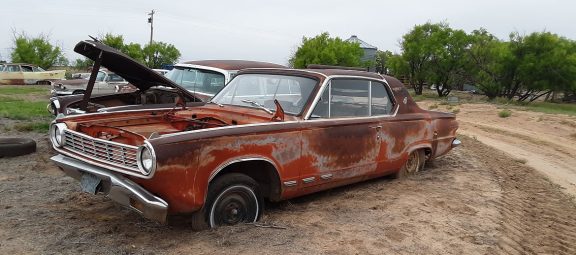
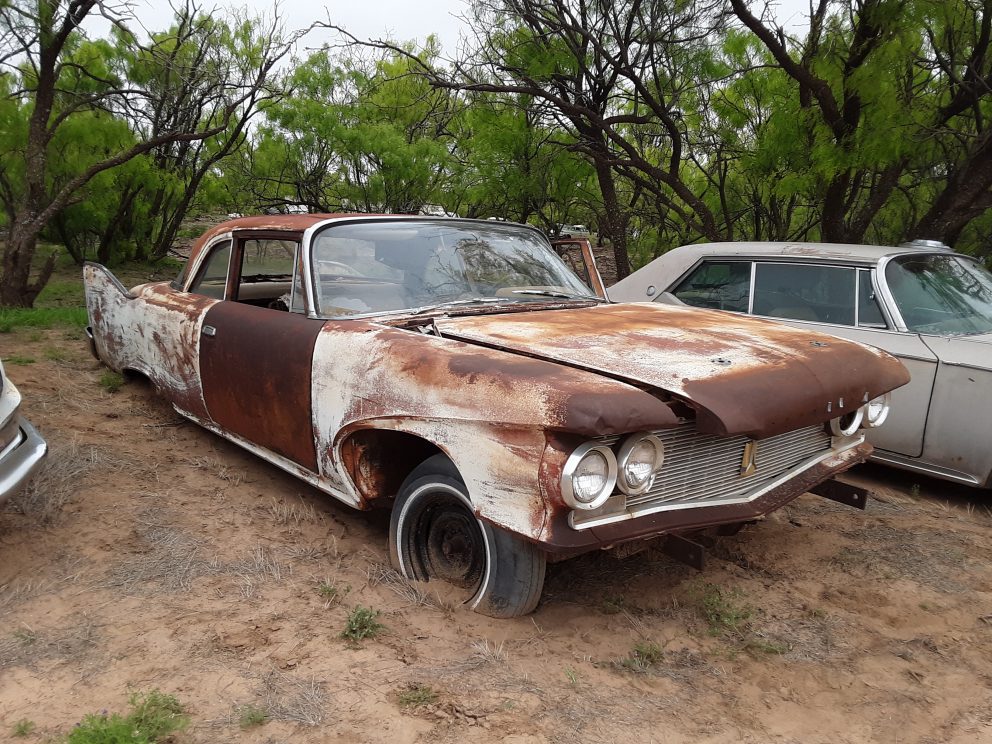
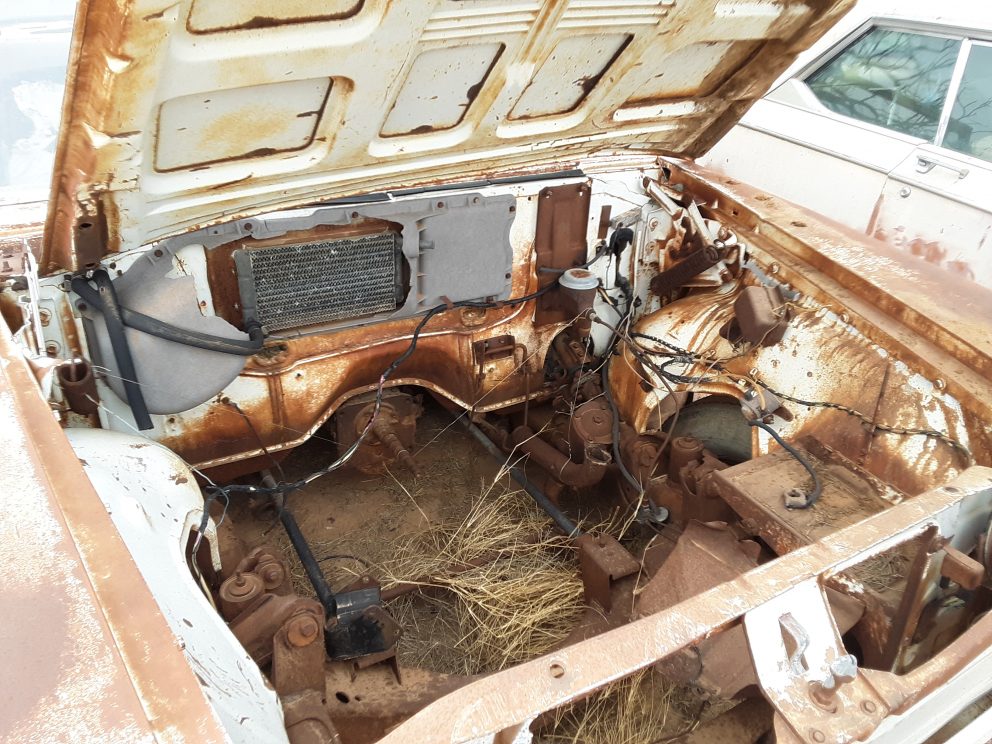
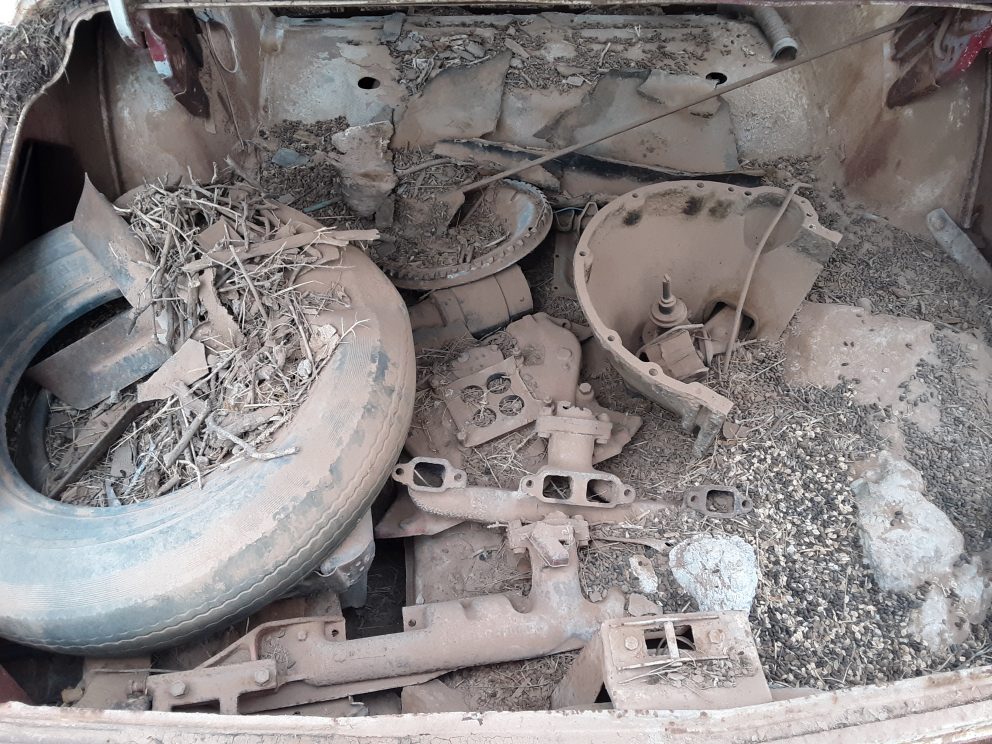
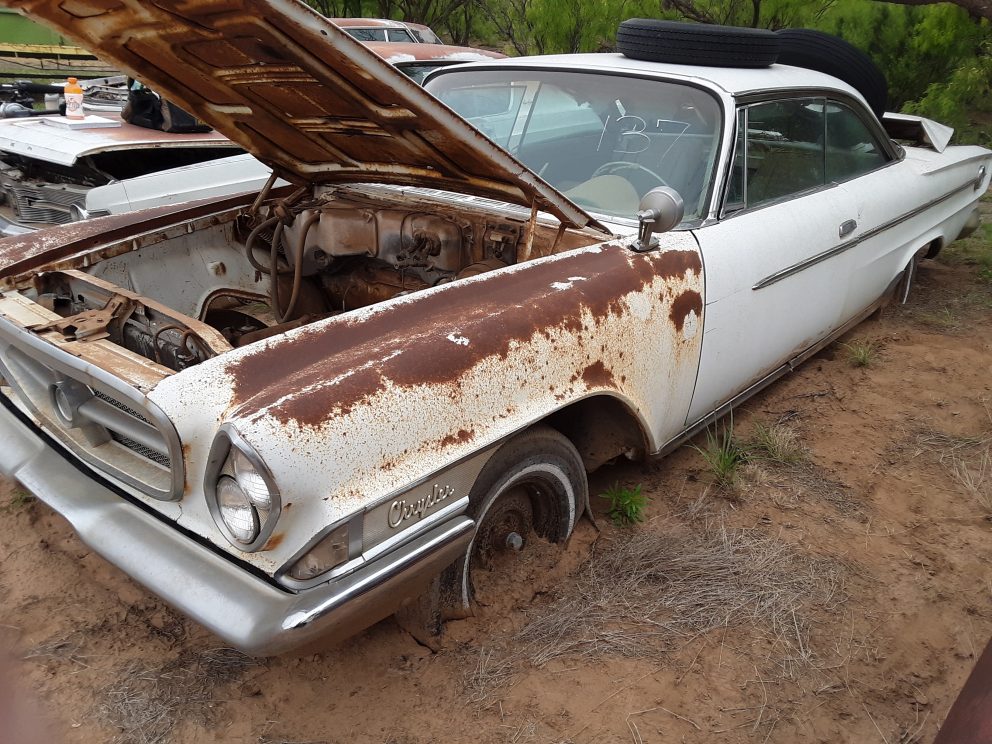
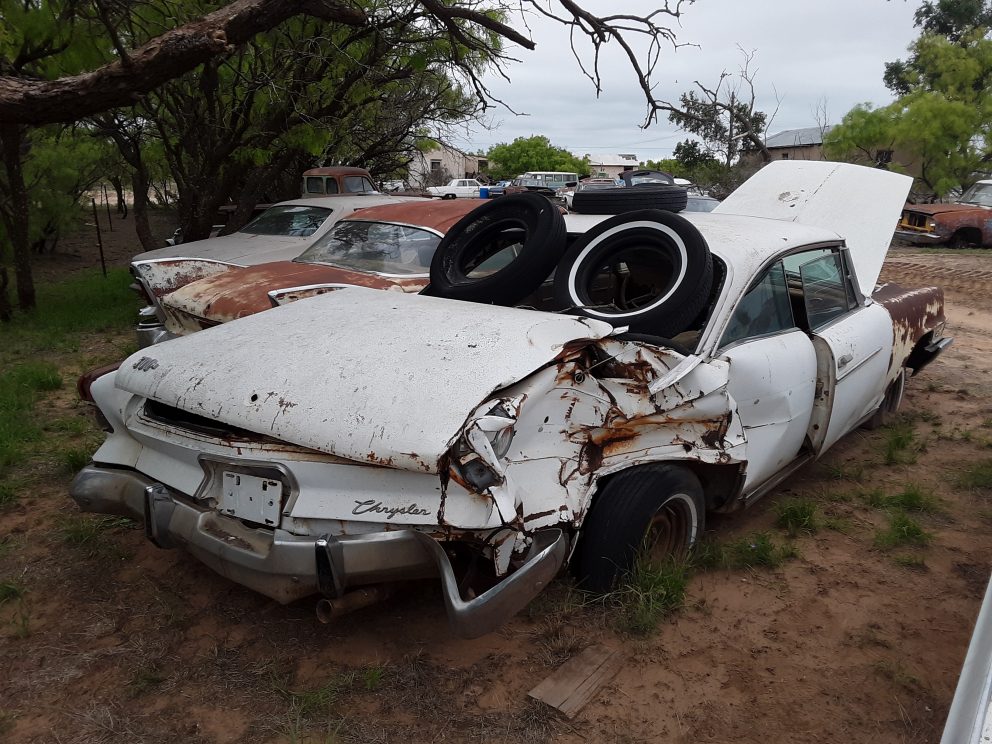
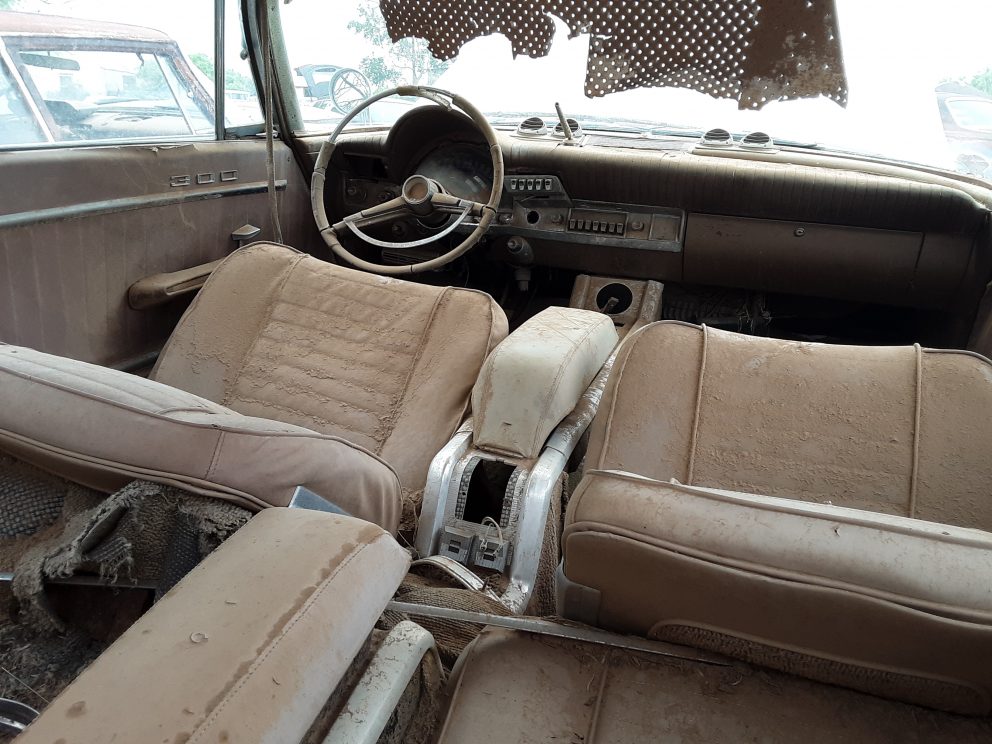
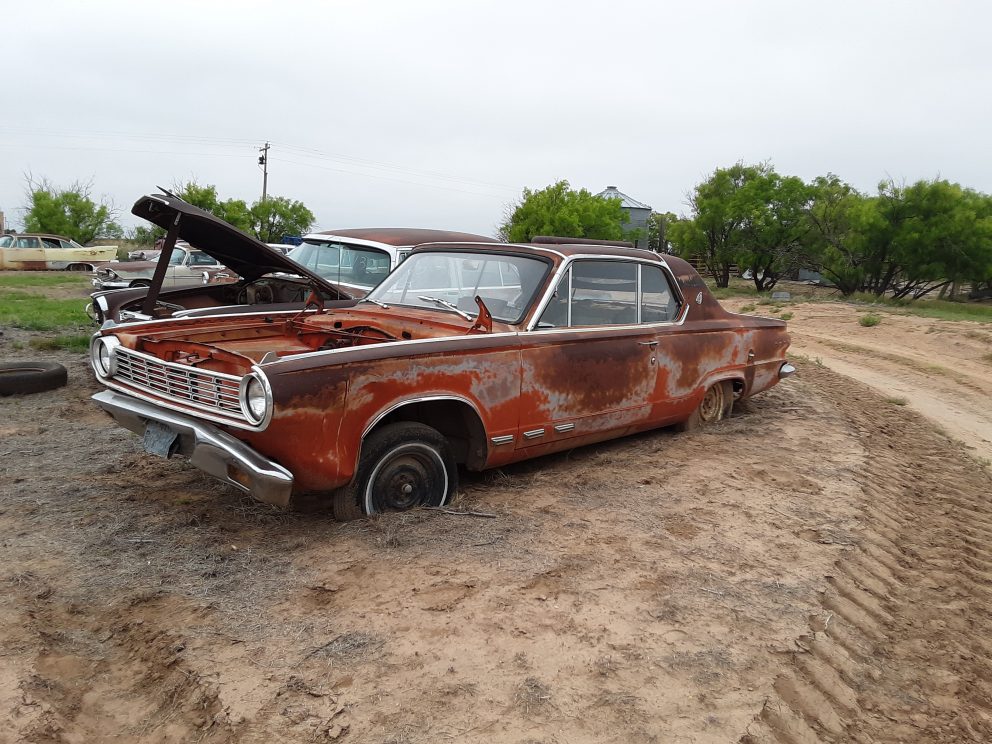
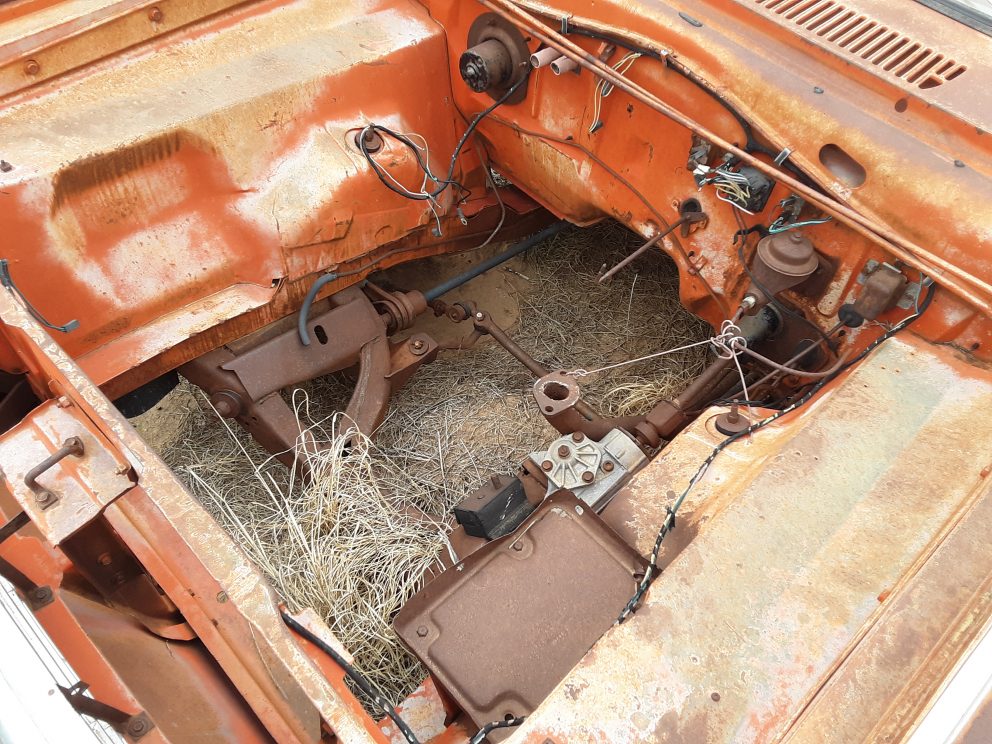
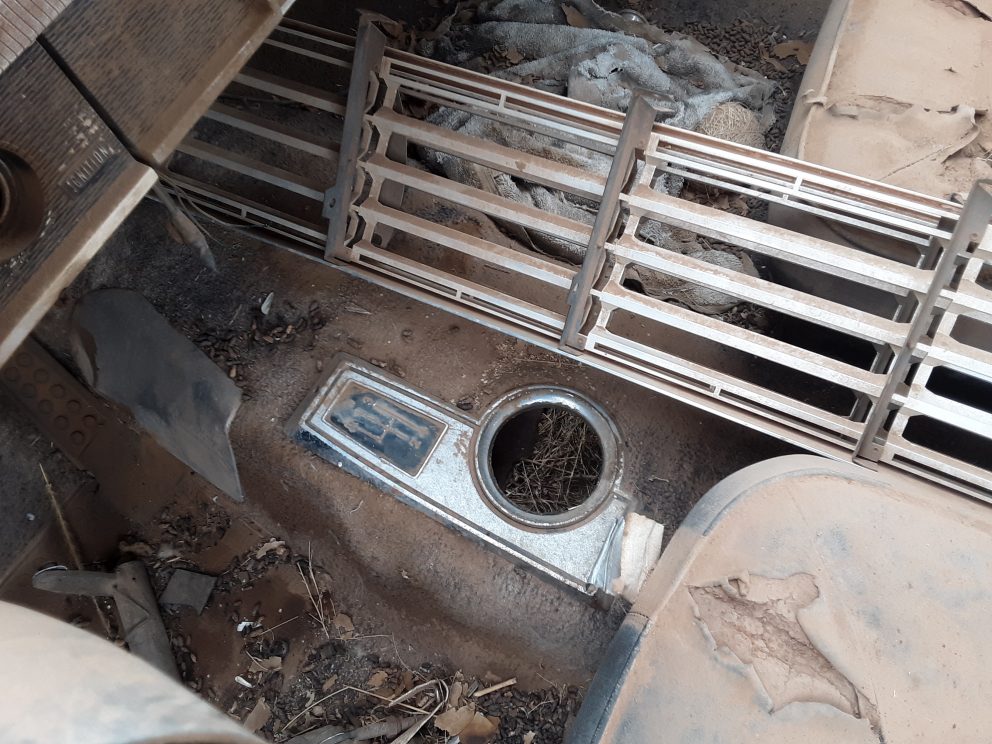
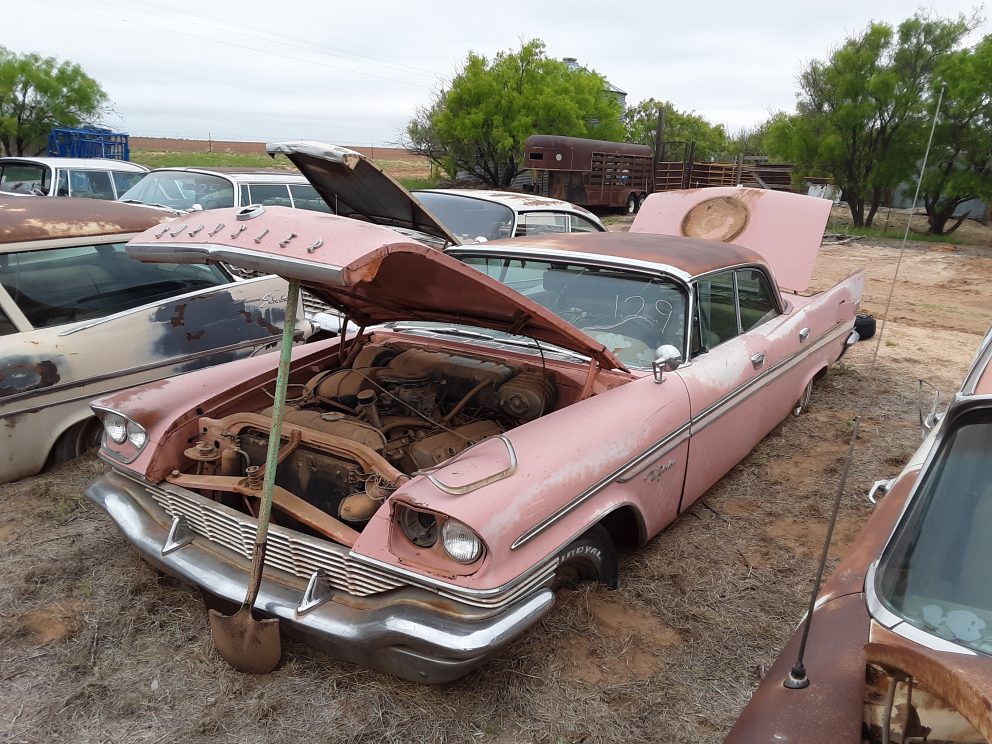
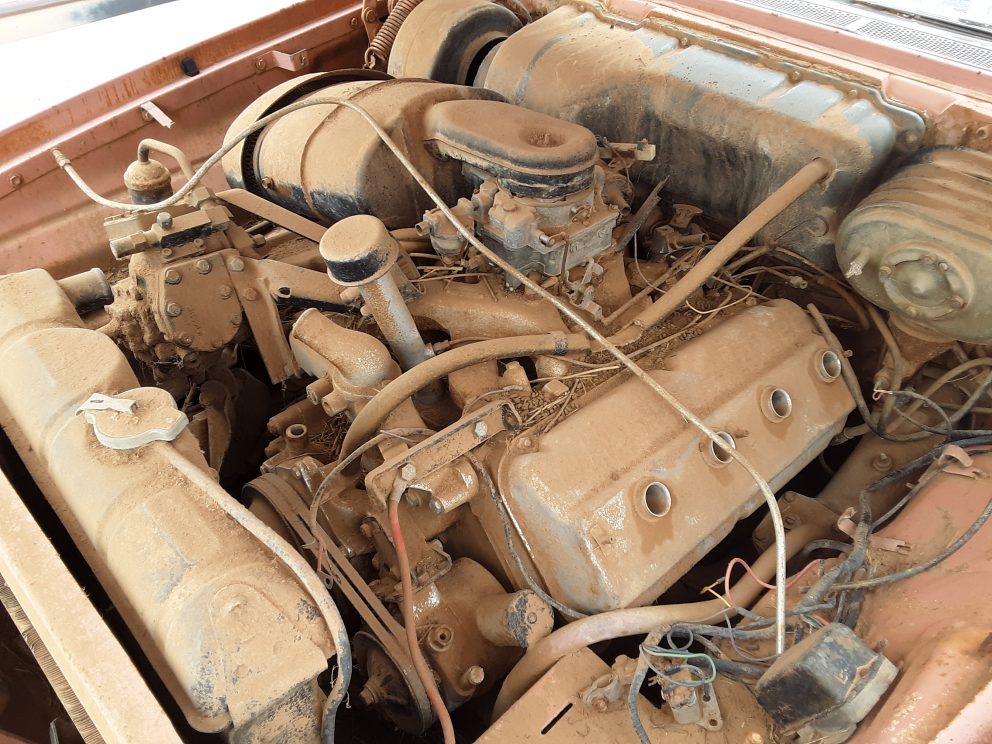
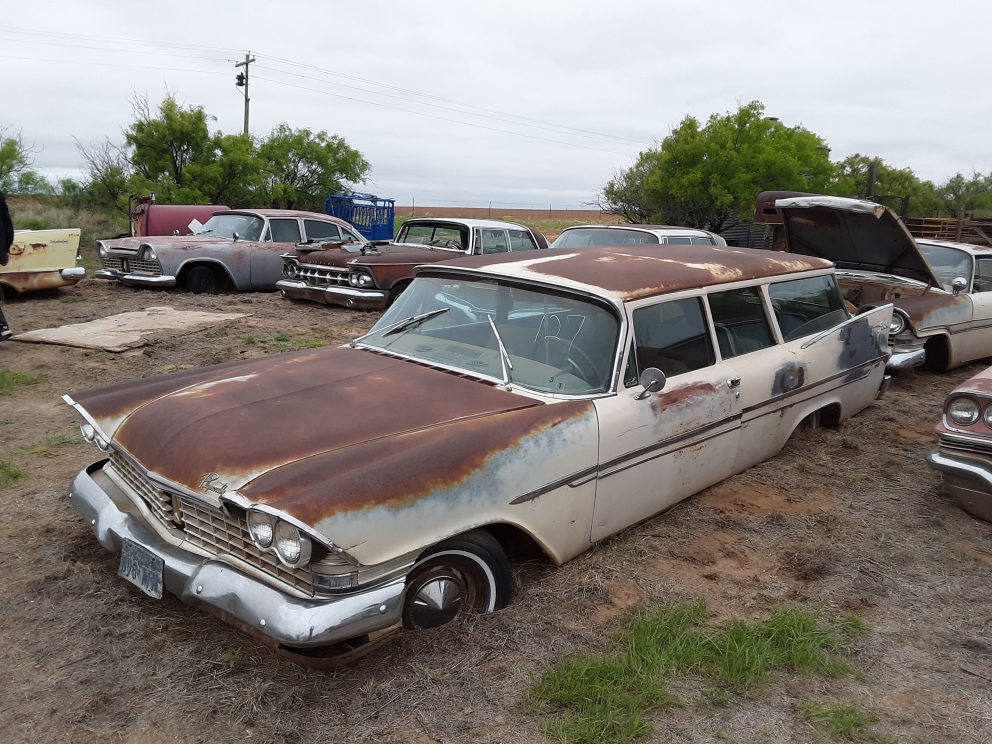
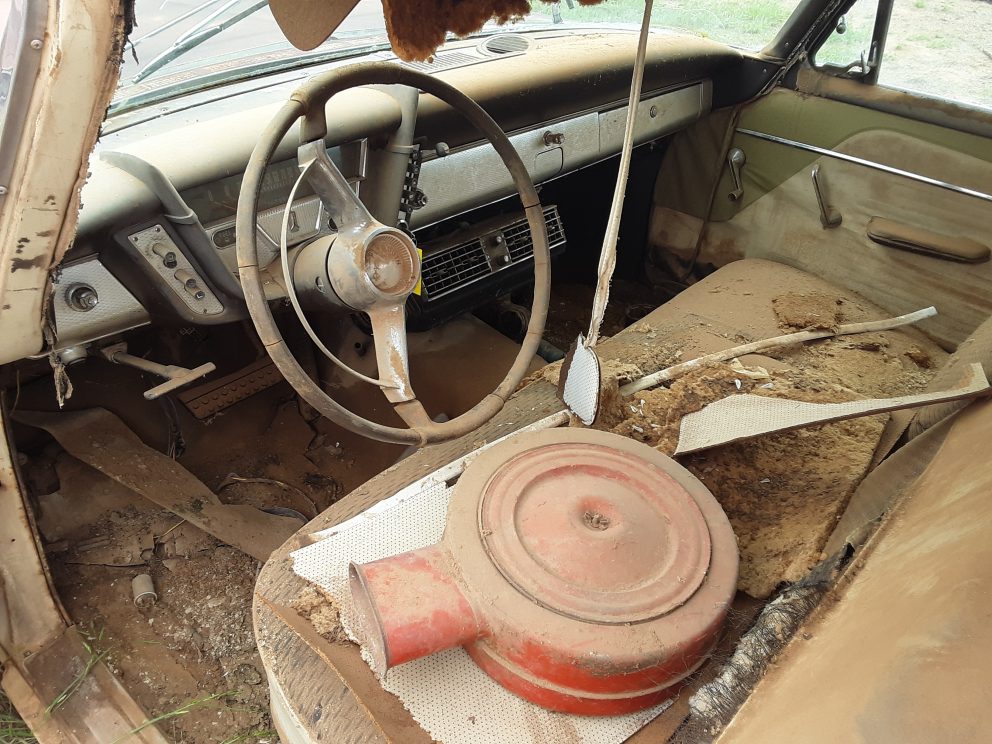
0 Comments